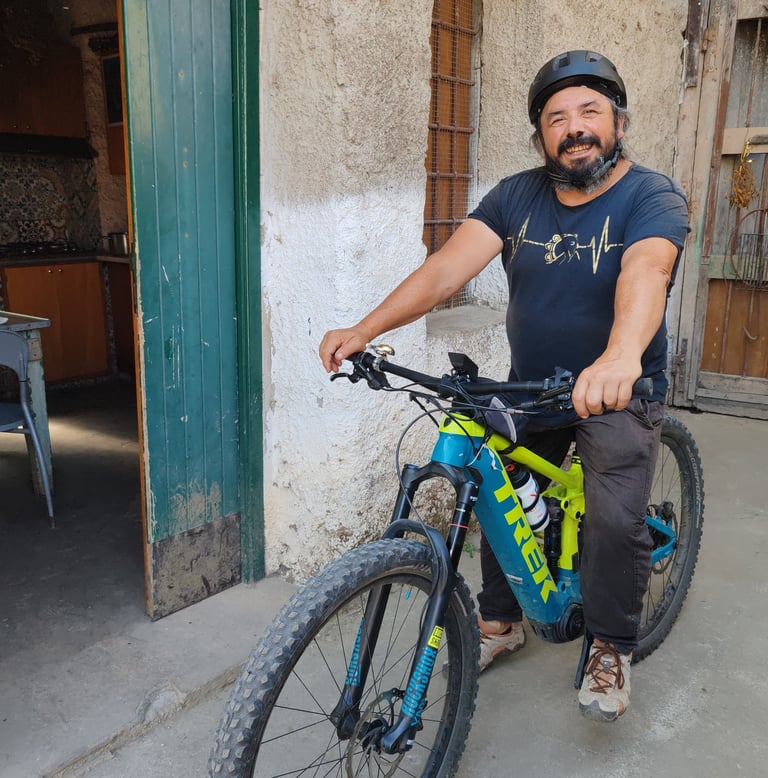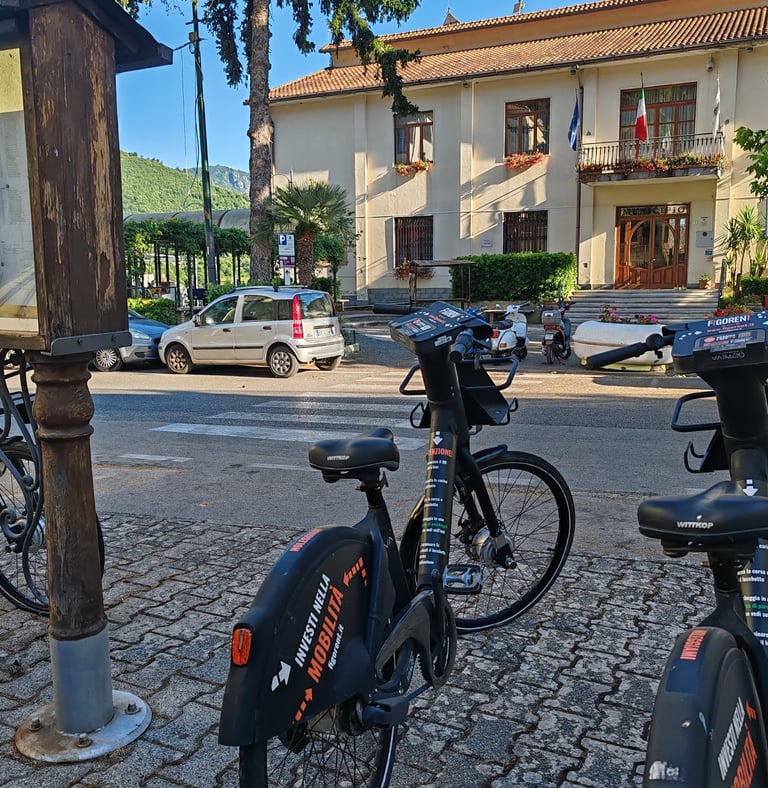Cycling in Italy - Between Tradition and Transformation
Discover how cycling is making a comeback in Italy from the bustling streets of Naples to the mountain roads of Tramonti. This article explores the challenges and grassroots efforts driving a quiet cycling revolution in southern Italy. With the help of electric bikes, local activism, and renewed public interest, two wheels are slowly reclaiming their place on Italy’s roads.


Cycling has long been woven into the fabric of Italian culture. From the cobbled climbs of the Giro d’Italia (among the 3 most known road cycling races in the world) to the legendary craftsmanship of bike brands like Bianchi, Colnago, and Pinarello, the country’s relationship with two wheels runs deep. Today, that legacy is being reimagined, especially in northern cities where urban planning and climate goals are converging to promote a greener way of moving.
Cities like Bologna have joined the “City 30” movement, reducing speed limits to 30km/h to favor cyclists and pedestrians over cars. Investments in cycling infrastructure, bike lanes, and tourism initiatives continue to grow, helping to position cycling as both a modern transportation solution and a nod to Italy’s past.
While northern Italy races ahead with bike-friendly policies and infrastructure, much of the South still struggles to catch up. Rugged landscapes, narrow and bumpy roads, and a deep-rooted car and scooter culture make cycling a challenging proposition in many southern towns and cities. Yet despite these obstacles, encouraging signs of change are emerging, even if one step at a time, both from dense urban centers to remote mountain villages.
Even in Naples, a city long regarded as chaotic and unfriendly to both cyclists and pedestrians, the wheels of transformation are starting to turn. Known for its wild traffic and unpredictable driving, Naples has never been an easy place to ride a bike. And yet, change is happening, driven in part by grassroots organizations like Napoli Pedala.
This local association, led by passionate Luca Simeone, blends cultural activism with hands-on support for sustainable mobility. Napoli Pedala runs workshops where residents can repair or buy second-hand bikes, organizes public events to raise awareness, and advocates for policies that make urban cycling more accessible and safer. Their work is helping shift mindsets in a city where cars and scooters have long ruled the roads, proving that cycling can flourish even in the most unlikely of places when supported by strong local engagement.
Far from the urban bustle of Naples, similar challenges and opportunities exist in rural areas like Tramonti, a scattered mountain village on the Amalfi Coast. Here too, cycling is often overshadowed by car dependency and difficult terrain. The roads are narrow, steep, and shared with fast-moving vehicles. Infrastructure is minimal. And yet, the potential for cycling to become part of daily life is beginning to emerge, thanks to both community action and modern technology.
The South’s Uphill Battle: Pedaling against the odds




The local environmental association ACARBIO is working to reintroduce sustainable mobility into the rhythms of rural life, promoting awareness of cycling as a viable and eco-friendly option. Electric bikes, in particular, are proving to be a possible game-changer. Residents like Isidoro Caso, from the hamlet of Corsano, have embraced them for their daily errands, praising the freedom they provide compared to cars. “It gives me more freedom,” he says. “I don’t have to worry about parking the car all the time”. His example has already inspired others to follow suit, showing how local momentum can grow organically when cycling becomes both practical and enjoyable.
The municipality of Tramonti has even launched a bike-sharing initiative, offering residents the chance to borrow bikes for a small monthly fee. While the current system has limitations, such as a one-hour use window, it signals a growing institutional interest in promoting alternative mobility.
Together, the stories of Naples and Tramonti illustrate a wider movement: a slow but determined shift toward cycling in places where it was once unthinkable. Whether through grassroots activism in cities or quiet experimentation in rural villages, southern Italy is beginning to explore new ways of moving, on two wheels.


Italy's mountainous regions are no strangers to cycling success stories. A recent article from The Guadian profiled a family in the Alps who sold their cars and committed fully to life on bikes. “Everything is possible,” they explained, “if you're willing to adapt and organize”. Armed with several different types of bikes for meeting different needs, including a cargo bike for grocery and other more demanding errands, they restructured their life, proving that even challenging geography can be navigated, with the right mindset and support.
A road worth taking
Tramonti, like much of southern Italy, isn’t an obvious cycling haven. But it holds promise. With sustained local efforts, better infrastructure, and the growing availability of electric bikes, the hills no longer seem undoable.
Cycling here may never fully replace cars, but it doesn’t have to. What matters is creating space for coexistence: where a bike ride is safe, practical, and celebrated. With the right mix of community initiative and political backing, even the steepest climbs can lead to transformation.
Di Martino, Lajoinie Dodel

